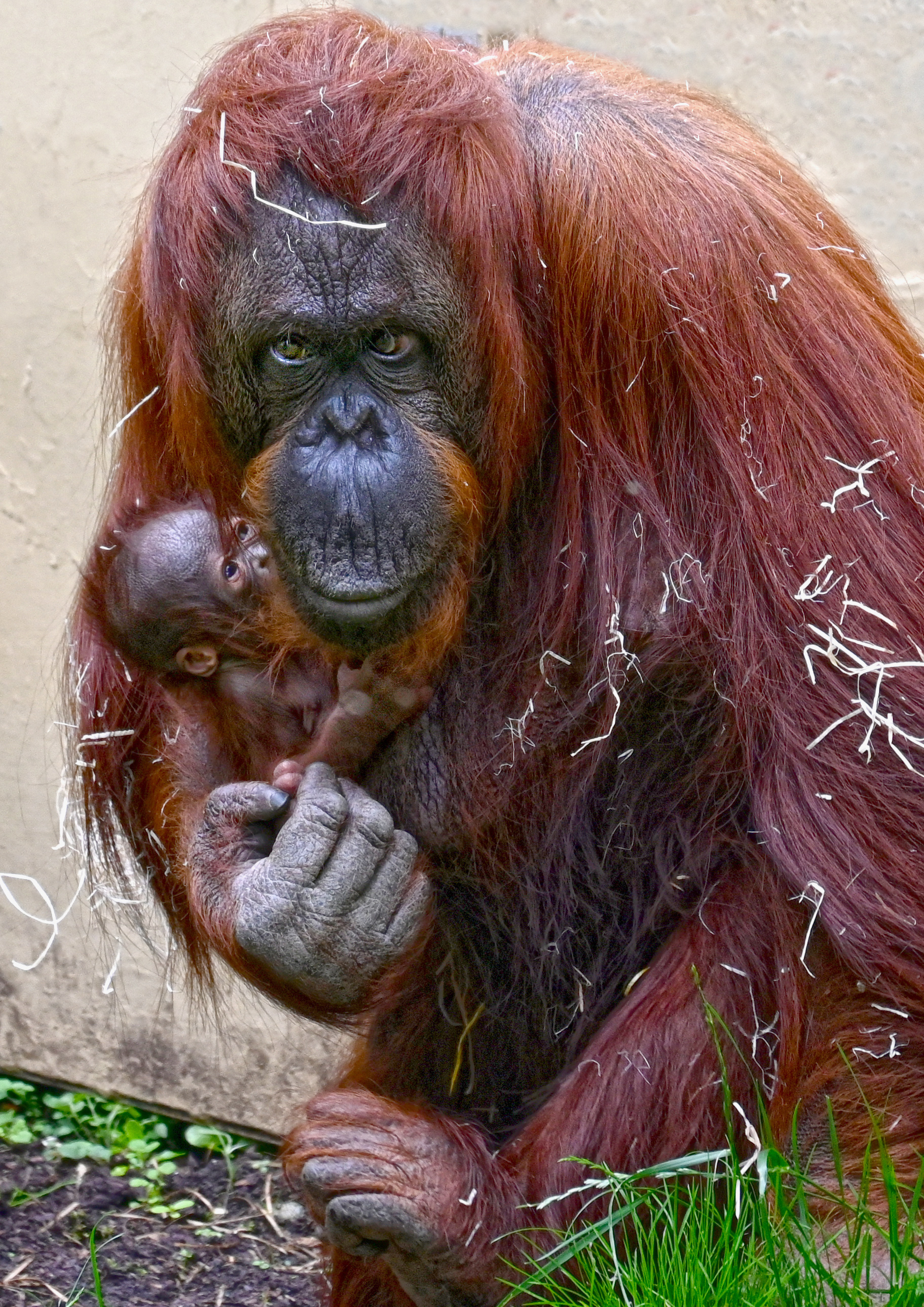Derek Grove, Zoo Director at Dudley Zoo & Castle, describes one of the best moments of his time at the zoo and how they went about the creation of a brand new habitat for their orangutans.
It’s odd to have envisaged, discussed and planned a project for so long that it became a bit of a standing joke in the zoo community, in that ‘next year Dudley Zoo will be commencing the redevelopment of their facilities for their orangutans’, though sadly it was always NEXT YEAR.
Hell, I’m not making excuses because I will be the first to admit that it has taken us far too long to provide a more complex facility for these wonderful apes and even breaking the development into phased projects failed to speed the process along enough.
The Ape House was constructed in 1960 and designed to enable visitors to view and compare three of the four great ape species – orangutans, chimpanzees and gorillas.
We no longer keep gorillas and relocated our chimpanzees elsewhere on site in 1998.
We currently have five Bornean orangutans, with new male Djimat (33) housed with females Jazz (30) and Sprout (11) and 44-year-old Benji living as a solitary male. And just this week we were overjoyed to welcome a brand new infant orangutan born here at the zoo.

As ever, finances were a major stumbling block to support the aspirations to develop rather than a lack of desire or ambition on our part. The first phase of restoration delivered an increase of 700 cubic meters of indoor accommodation by amalgamating the visitor viewing corridor with the former animal night dens to create two large indoor areas and three off-show dens.
For many of the older zoos sited within large conurbations it is not easy or inexpensive to redevelop the site as you would wish. Acquiring planning permission is problematic on a site that hosts 13 Grade 2/Grade 2* listed buildings and one Grade 1 listed building all within a Conservation area, with the majority of the site covered under two Schedule Monument Orders and the foliage subject to Tree Preservation Orders. Planning permission for the second phase was finally granted in mid-March 2020, then construction was delayed for a further 12 months as a result of the covid pandemic.
With excuses aside, work started in early 2021 with the project encompassing the inclusion of the adjacent enclosure to provide an additional grassed area of 1,300 square meters.
Construction was finally completed in May 2022 and the habitat includes an extensive climbing frame to encourage more arboreal activity, as well as shelters, platforms, nets and webbing. And the themed interpretation around the enclosure also includes contributions from a local graffiti artist to help reinforce our conservation messages about palm oil.
Opening the door to allow an animal access into any new area is often an anti-climax, so it was hardly surprising when the time came nothing happened except an orangutan having a peek at the wrong end of the tunnel!
It can take hours, or in the case of Benji, even days for an animal to decide if it’s safe enough and it was wonderful to watch our orangutans’ initial reservations overtaken by their curiosity as they came out to explore and all the orangutans are making great use of the new facility and the response from staff and visitors has been incredibly positive.
With such a major development it is important to ensure that a significant element of the financial resources that have been invested into of the animal facilities onsite also directly support their wild cousins. In this case we have committed to help fund the Sintang Orangutan Rescue Center in Indonesia, that focuses on the rescue, rehabilitation and release of orangutans back into the wild and hope to build a longstanding link between our organisations.
The completion of this project has provided a great deal of personal satisfaction, being part of the team that finally delivered this very much improved environment for our orangutans is well up there on my list of best moments at Dudley Zoo and Castle.
By Derek Grove, Zoo Director,
Dudley Zoo & Castle
All blogs reflect the views of their author and are not a reflection of BIAZA's positions.
-
News
.png?w=100&h=100&zc=1&f=jpeg&hash=0430edf351b539b75228d809dfbb874a) CCTV footage at Noah’s Ark Zoo Farm shows elephants' cosy slumber 29th April, 2024Have you ever pondered how elephants sleep? Noah’s Ark Zoo Farm, a zoo and conservation charity in North Somerset, unveils night-time footage capturing…
CCTV footage at Noah’s Ark Zoo Farm shows elephants' cosy slumber 29th April, 2024Have you ever pondered how elephants sleep? Noah’s Ark Zoo Farm, a zoo and conservation charity in North Somerset, unveils night-time footage capturing… -
NewsYorkshire wildlife park celebrates the birth of a cute Gelada Monkey 26th April, 2024Award-winning Yorkshire wildlife park is celebrating the birth of a cute Gelada Monkey. The baby boy was born on the 23 March to mum Feven and dad…
-
News‘Extinct’ dove takes flight at Paignton Zoo 25th April, 2024The Socorro dove is extinct in the wild. However, Paignton Zoo in Devon is not only home to these rare birds, but keepers are proud to announce that a…



